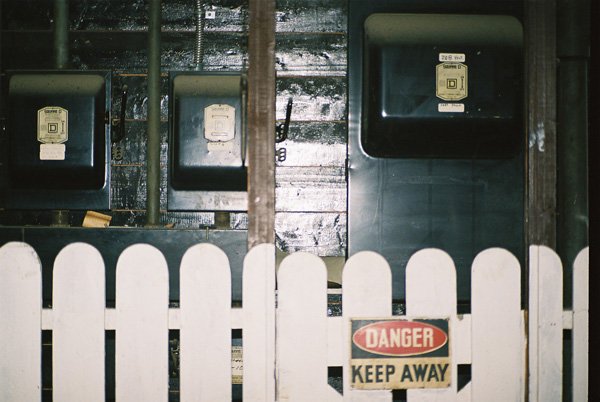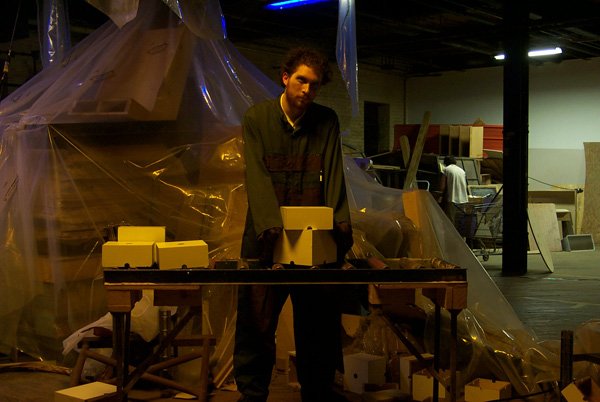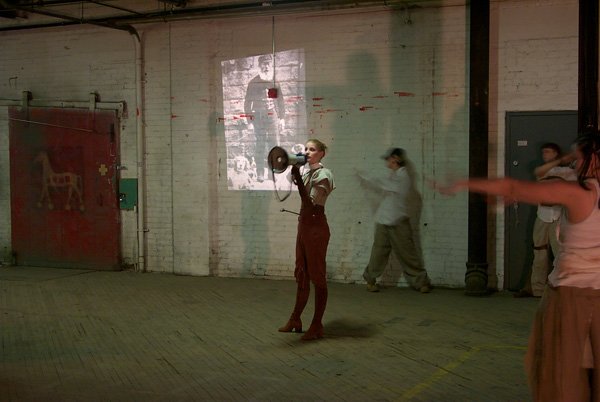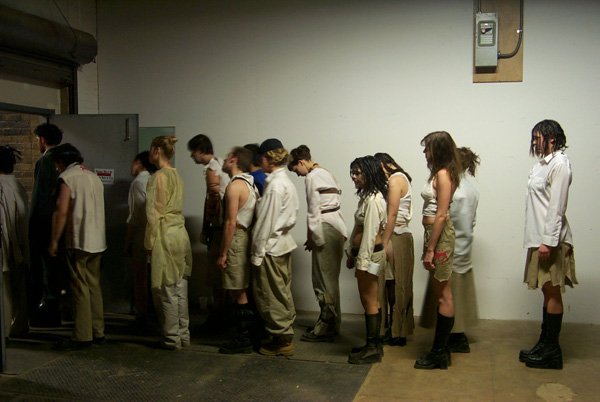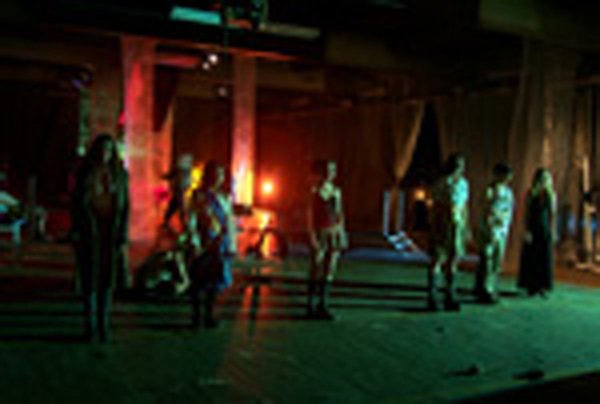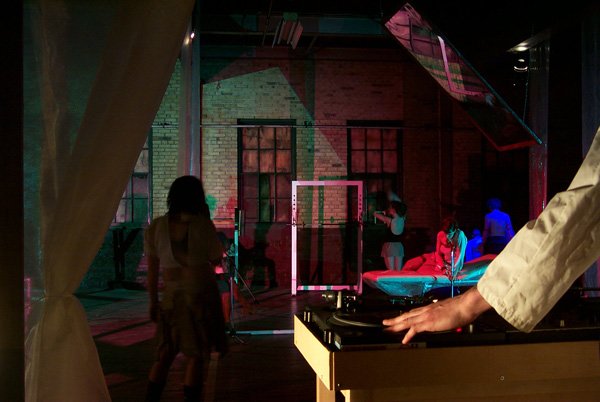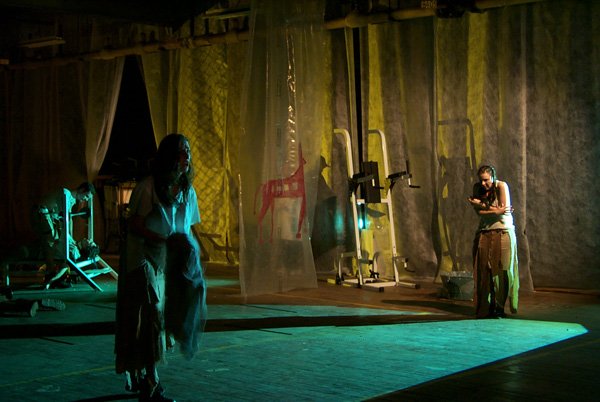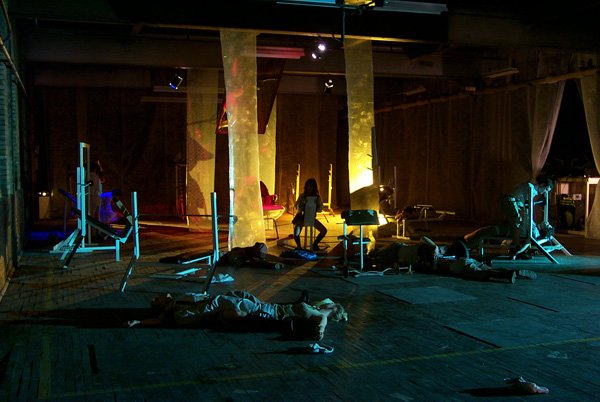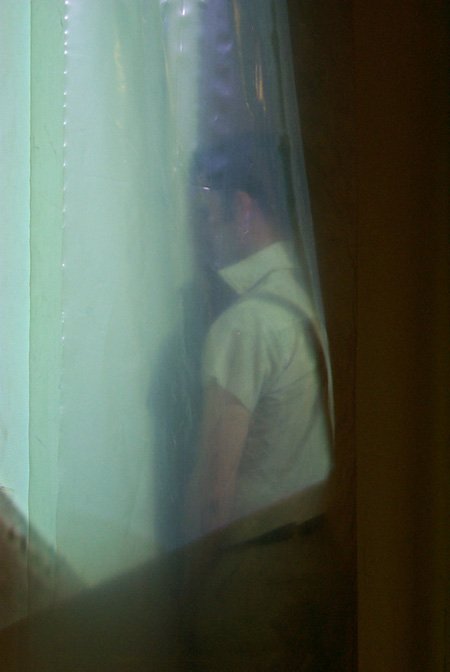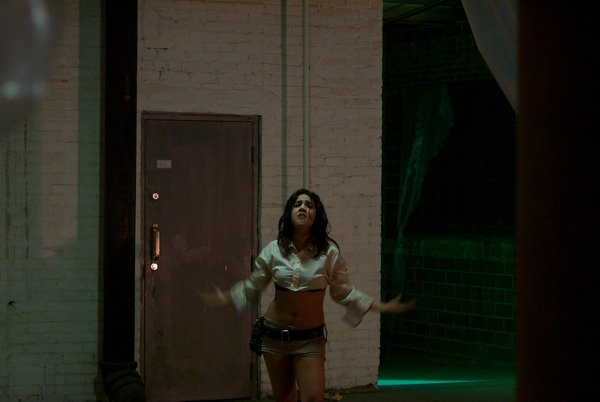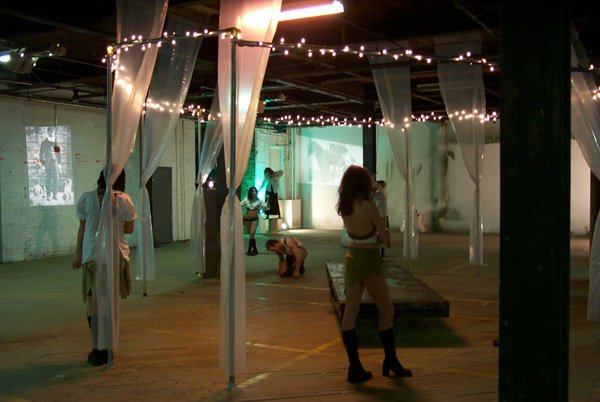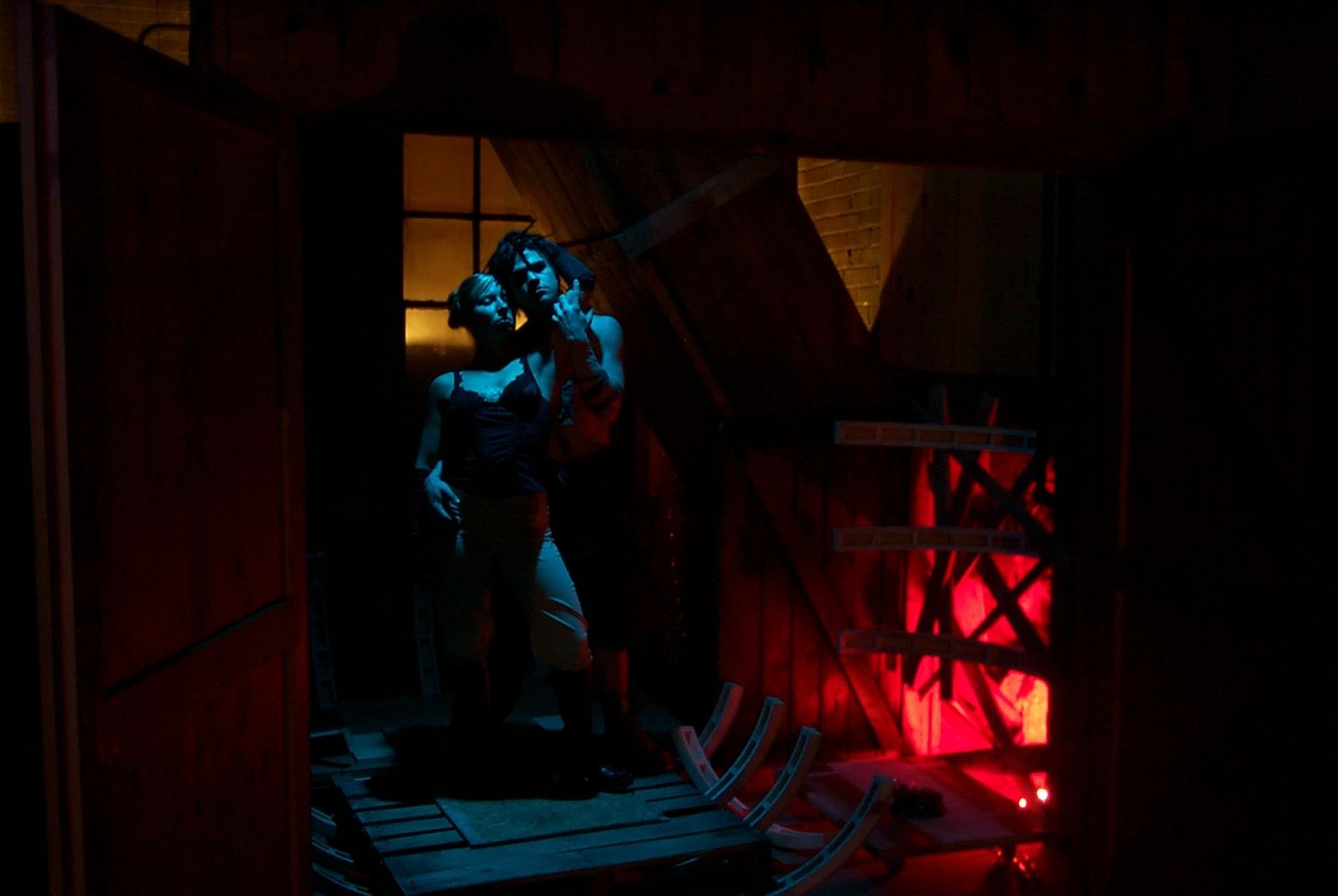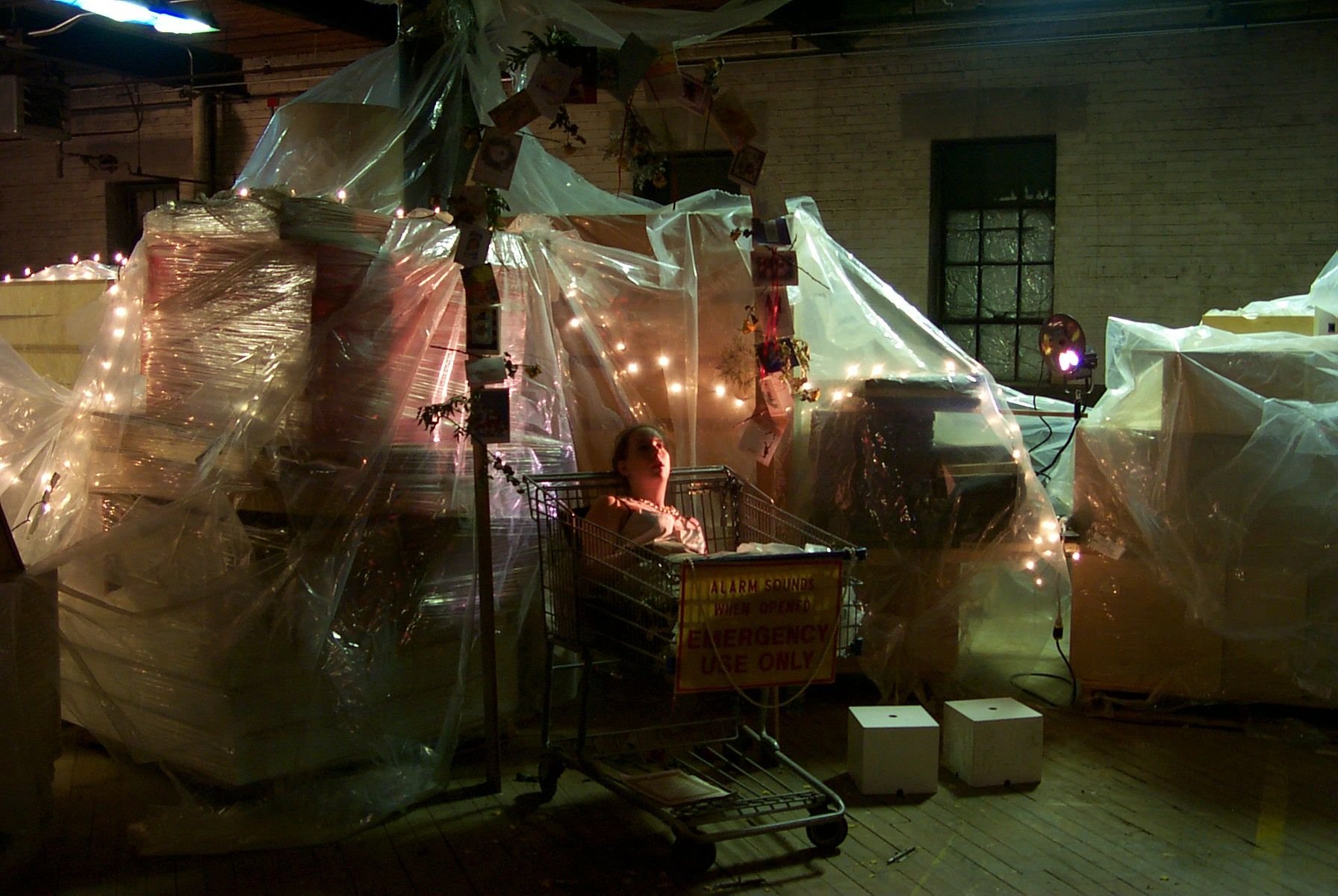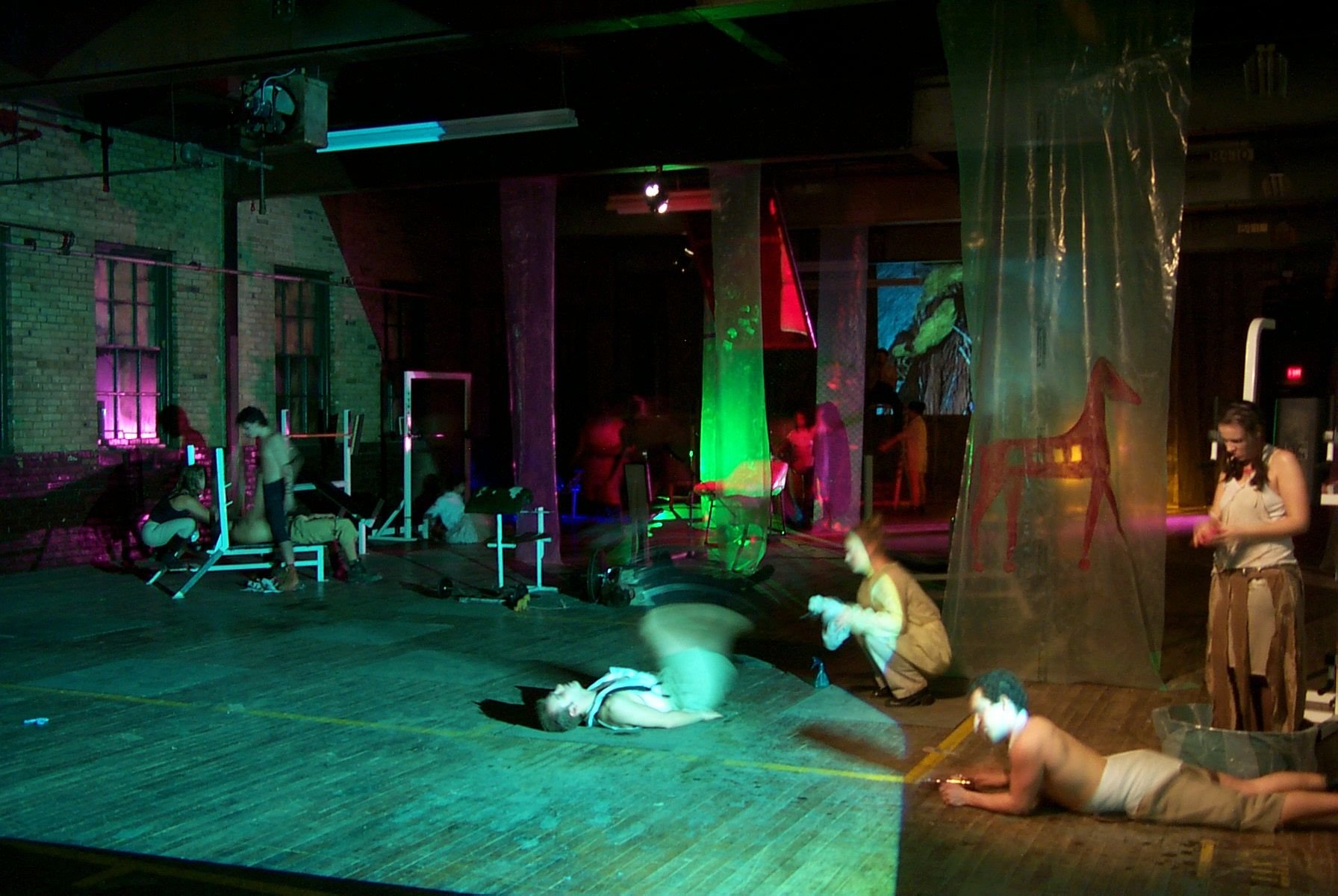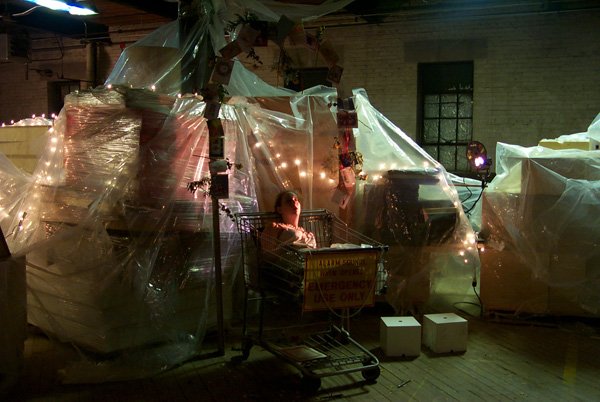MIMETIC
FLESH
Walking and Looking
As the “mimetic” part of our title suggests, you will see reflections; sometimes you will see these reflections not from the point of focus but from the corner of the eye. As a witness to the revelation of the “flesh” of this building and its inhabitants, you will need to piece together the body parts that we have laid out for you. These parts and their conjunction hint at a narrative whole, but the pattern and placement have more to do with music, with the rhythms of work, with meditative space than with a play text. Our collective quest is to show the stories we do know about this place so that we might expose hints of those we do not know.
What happens when an old tannery becomes an object of representation for theatre? As a site utilized for the creation of theatre, I think the Lang Building has evolved two realities. The first is based on its substantial, matter-of-fact existence; the second has to do with our gaze. This view is puzzled by our desires and anxieties. Indeed, this second 'reality' is posited by our feelings and experiences of the place, by the ‘aura’ of its objects. Walter Benjamin has said that to perceive the aura of an object is to invest it with the ability to look at us in return; although it may seem like a pure illusion, the way we perceive the aura of our surroundings is capable of triggering a whole chain of consequences that will affect the way we see the world forever. Mimetic Flesh is the dramatized result of our perception of the aura of the Lang Building; it is an excursion into site-seeing to which I now welcome you.
“Their story begins on ground level, with footsteps”
ABOUT THE PROJECT
In his book A Seventh Man, John Berger describes the experience of the migrant worker, elaborating the great pilgrimage of the twentieth century, the journey from the village to the city, from the old world to the new. Today most of us live in cities and some of us may have worked in a building like the Lang; both experiences represent the urban pilgrimage, marked by the congregation of strangers. We can never know more than a fraction of our fellow workers, and we can never know the entire factory with its many doors, dark corners and sprawling passageways. We are destined to be one amongst a great many; as Berger writes, “so many lives, jostling, colliding, disrupting, adjusting, recognizing, settling, moving again to new spaces”.
The performance you are about to walk through, and witness, amounts to a layering of lives, of diverse voices, objects, and actions. Think of your first day at work in a place like this. You want to find your way around, to get to know the people, to gain some kind of useful knowledge of this place and the people in it; yet, as a worker in this place, you will not achieve any such totalising view. As you walk, your body will become a part of the building, following the thick and thin of the factory ‘text’, a text you will now contribute to, but may never fully read. As you find your route through the Lang Building, think about how walking explores, suspects, transgresses and respects the trajectories it takes; step by step we decide how we will do it, how we will approach the text of this place: you will gain understanding through movement.

